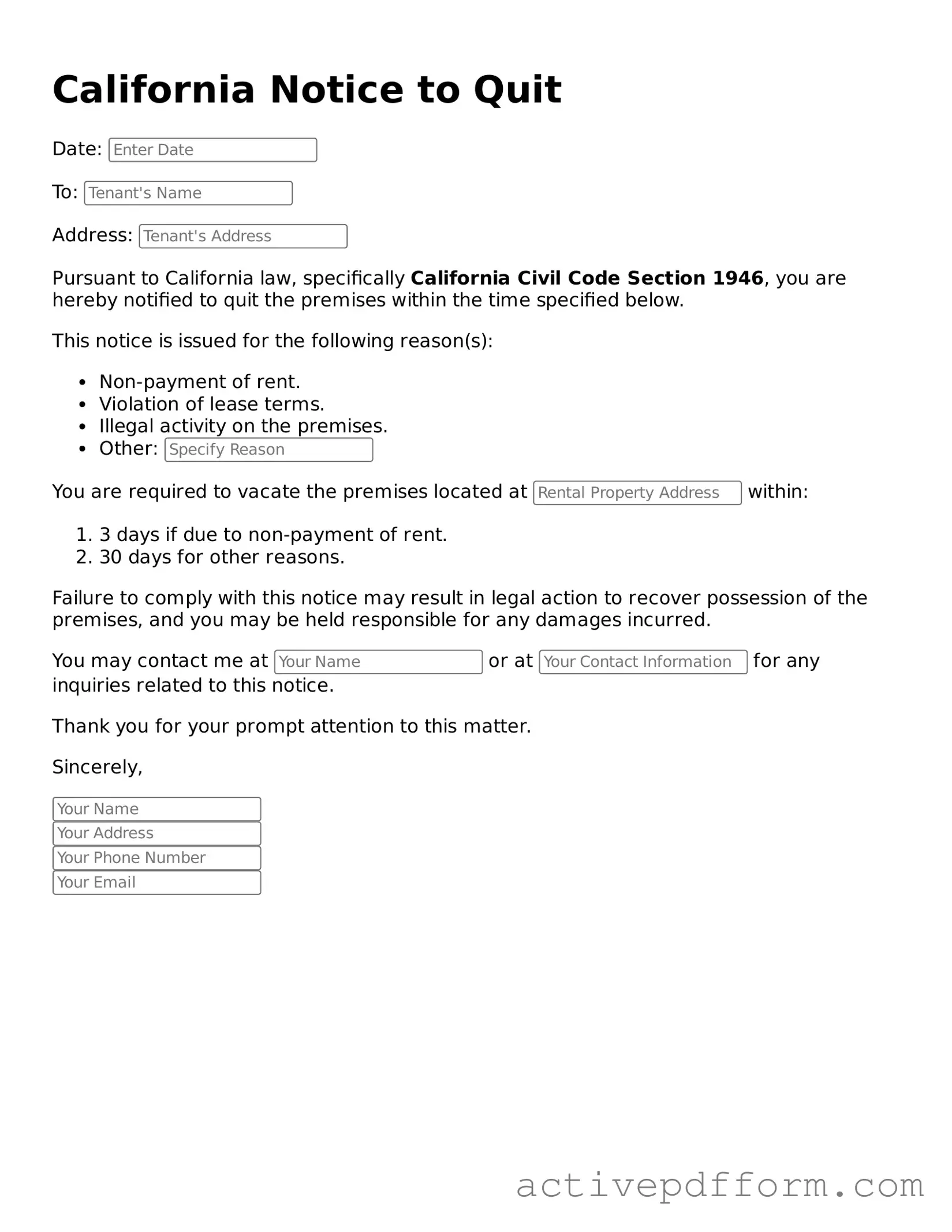What is a California Notice to Quit form?
The California Notice to Quit form is a legal document used by landlords to inform tenants that they must vacate the rental property. This notice typically indicates that the tenant has violated the lease agreement or has not paid rent. The form serves as a formal request for the tenant to leave the premises within a specified timeframe.
How long does a tenant have to respond to a Notice to Quit?
The response time varies based on the reason for the notice. Generally, if the notice is for non-payment of rent, the tenant has three days to pay the owed amount or vacate. For other lease violations, the tenant typically has 30 days to correct the issue or leave the property. It's crucial for tenants to read the notice carefully to understand their obligations.
Can a landlord file for eviction immediately after sending a Notice to Quit?
No, a landlord cannot file for eviction right after sending a Notice to Quit. They must first wait for the specified time period mentioned in the notice. If the tenant does not comply with the notice by either paying rent or vacating, the landlord can then proceed with the eviction process through the court.
What happens if a tenant ignores the Notice to Quit?
If a tenant ignores the Notice to Quit, the landlord may initiate eviction proceedings. This involves filing a lawsuit in court. The tenant will receive a summons and complaint, giving them a chance to respond. Ignoring the notice could lead to a court ruling in favor of the landlord, resulting in the tenant being forced to leave the property.
Is a Notice to Quit the same as an eviction notice?
No, a Notice to Quit is not the same as an eviction notice. The Notice to Quit is the first step in the eviction process, notifying the tenant of the need to vacate. An eviction notice, or unlawful detainer, is filed with the court after the notice period has expired and the tenant has not complied. The eviction notice is part of the legal process to remove the tenant from the property.
Do landlords need to provide a reason for the Notice to Quit?
Yes, landlords must provide a reason for issuing a Notice to Quit. The reason can include failure to pay rent, lease violations, or other justifiable causes. The notice should clearly state the reason for termination of the tenancy, allowing the tenant to understand the basis for the request to vacate.
